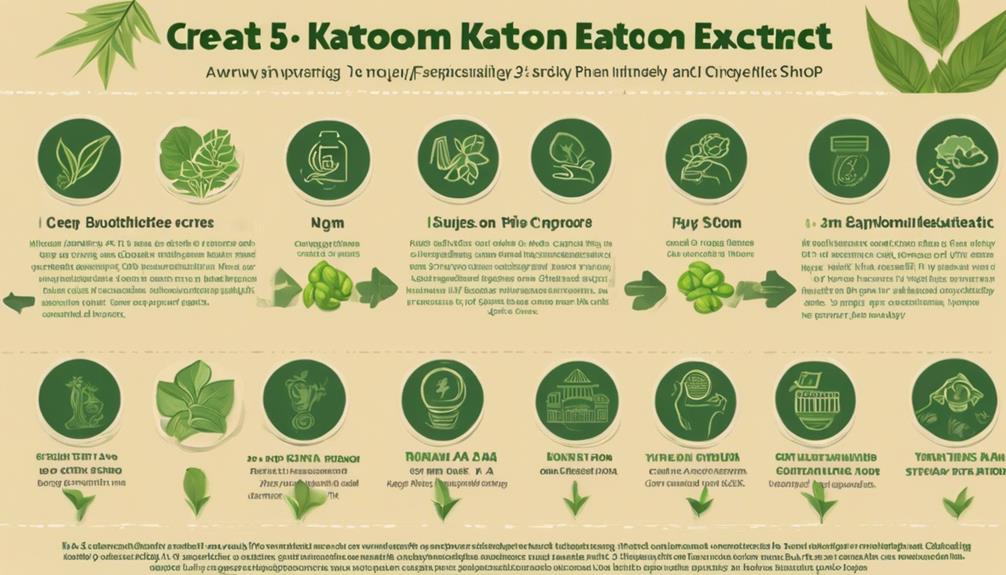Deprecated: mb_convert_encoding(): Handling HTML entities via mbstring is deprecated; use htmlspecialchars, htmlentities, or mb_encode_numericentity/mb_decode_numericentity instead in /home/users/kratomfiles/www/kratomfiles.com/wp-content/plugins/quick-adsense-reloaded/includes/template-functions.php on line 3552
Kratom, also known as Mitragyna speciosa, is a tropical evergreen tree in the coffee family native to Southeast Asia. The history of kratom dates back centuries, with its use deeply rooted in traditional cultures. In Southeast Asia, kratom has been used for its stimulant and pain-relieving properties for generations. The leaves of the kratom tree were traditionally chewed or brewed into a tea by workers to combat fatigue and increase productivity. In addition to its stimulating effects, kratom was also used as a traditional medicine to alleviate pain and treat various ailments.
The use of kratom spread beyond Southeast Asia, with European explorers and colonists documenting its use in the 19th century. Kratom was introduced to the Western world in the 19th century, where it was initially used as a botanical specimen. However, its potential medicinal properties soon caught the attention of researchers and medical practitioners. Today, kratom is gaining popularity in the United States and other Western countries, where it is used for its potential therapeutic effects. However, the history of kratom is not without controversy, as its use has been the subject of legal and regulatory scrutiny in many countries.
Kratom’s history is rich and complex, with its traditional use deeply ingrained in Southeast Asian cultures. As its popularity grows in the Western world, it is important to understand the historical context of kratom and its traditional uses before exploring its potential benefits and risks.
Key Takeaways
- Kratom has been used for centuries in Southeast Asia for its stimulant and pain-relieving properties.
- Both kratom and coffee contain alkaloids that can have stimulating effects on the body, but kratom also has opioid-like effects.
- Kratom and coffee can both increase alertness and energy levels, but kratom may also have sedative and analgesic effects.
- In traditional cultures, kratom is often consumed by chewing the leaves or brewing them into a tea, while coffee is typically brewed and consumed as a beverage.
- While both kratom and coffee may have potential health benefits, they also carry risks such as addiction and withdrawal symptoms. The legal and regulatory status of kratom and coffee varies by country.
Kratom and Coffee: Similarities and Differences
Kratom and coffee are both natural stimulants that have been used for their energizing effects for centuries. While they share some similarities, there are also key differences between the two substances. Both kratom and coffee contain alkaloids that have stimulating effects on the body, which is why they are often used to combat fatigue and increase alertness. However, the specific alkaloids present in kratom and coffee differ, leading to variations in their effects on the body.
One of the main differences between kratom and coffee is their origin and botanical classification. Kratom is derived from the leaves of the Mitragyna speciosa tree, which is native to Southeast Asia, while coffee comes from the seeds of the Coffea plant, which is native to Africa. Additionally, kratom contains alkaloids such as mitragynine and 7-hydroxymitragynine, which interact with opioid receptors in the brain, leading to its pain-relieving effects. On the other hand, coffee contains caffeine, a stimulant that affects the central nervous system by blocking the action of adenosine, a neurotransmitter that promotes sleep and relaxation.
While both kratom and coffee are used for their stimulating effects, it is important to note that kratom has additional properties that coffee does not possess, such as its potential analgesic effects. Understanding the similarities and differences between kratom and coffee is essential for evaluating their potential benefits and risks.
The Effects of Kratom and Coffee on the Body
Kratom and coffee have distinct effects on the body due to their unique chemical compositions. Kratom contains alkaloids such as mitragynine and 7-hydroxymitragynine, which interact with opioid receptors in the brain, leading to its stimulating and pain-relieving effects. These alkaloids can produce a range of effects, including increased energy, improved mood, and pain relief. Additionally, kratom can have sedative effects at higher doses, leading to feelings of relaxation and euphoria.
On the other hand, coffee contains caffeine, a central nervous system stimulant that blocks the action of adenosine, a neurotransmitter that promotes sleep and relaxation. The effects of caffeine include increased alertness, improved concentration, and enhanced physical performance. However, excessive consumption of caffeine can lead to side effects such as anxiety, insomnia, and rapid heart rate.
Both kratom and coffee have the potential to produce stimulating effects on the body, but their mechanisms of action differ due to their unique chemical compositions. Understanding how kratom and coffee affect the body is crucial for evaluating their potential therapeutic uses and risks.
How Kratom and Coffee are Used in Traditional and Modern Cultures
| Culture | Kratom | Coffee |
|---|---|---|
| Traditional Use | Used in Southeast Asian ceremonies and rituals for centuries | Originated in Ethiopia and has been used in traditional Arabic culture for centuries |
| Modern Use | Used for its stimulating and pain-relieving effects | Consumed for its stimulating effects and as a social beverage |
| Preparation | Leaves are chewed, brewed into tea, or ground into powder | Beans are roasted and ground, then brewed with hot water |
| Effects | Can produce feelings of euphoria, relaxation, and increased energy | Provides a temporary increase in alertness and energy |
Kratom and coffee have been used in traditional cultures for centuries, with their consumption deeply ingrained in social and ceremonial practices. In Southeast Asia, kratom has been traditionally consumed by chewing the leaves or brewing them into a tea to combat fatigue and increase productivity. The use of kratom in traditional cultures is often accompanied by rituals and social gatherings, where it is shared among community members.
Similarly, coffee has a rich history of traditional use in cultures around the world. In many countries, coffee drinking is a social activity that brings people together for conversation and relaxation. Coffee has also been used in traditional medicine for its stimulating effects, with some cultures incorporating it into healing rituals.
In modern cultures, both kratom and coffee continue to be consumed for their stimulating effects. Kratom has gained popularity in the United States and other Western countries, where it is used for its potential therapeutic benefits. Similarly, coffee consumption is widespread around the world, with a thriving industry that caters to a variety of tastes and preferences.
The traditional and modern uses of kratom and coffee reflect their enduring popularity and cultural significance. Understanding how these substances are used in different cultures provides valuable insight into their social and medicinal roles.
Kratom and Coffee: Potential Health Benefits and Risks
Kratom and coffee have been associated with potential health benefits, but they also carry risks that should be carefully considered. Kratom has gained attention for its potential analgesic effects, leading some individuals to use it as an alternative treatment for chronic pain. Additionally, kratom has been reported to have mood-enhancing properties, making it potentially useful for managing symptoms of depression and anxiety. However, there are also risks associated with kratom use, including dependence, withdrawal symptoms, and potential adverse effects on the liver.
Similarly, coffee has been linked to various health benefits when consumed in moderation. The caffeine in coffee has been shown to improve cognitive function, enhance physical performance, and reduce the risk of certain diseases such as Parkinson’s disease and type 2 diabetes. However, excessive consumption of coffee can lead to side effects such as anxiety, insomnia, and digestive issues.
It is important to weigh the potential health benefits and risks of kratom and coffee before using them for medicinal purposes. Understanding how these substances may impact health can help individuals make informed decisions about their consumption.
Kratom and Coffee: Legal and Regulatory Status

The legal and regulatory status of kratom and coffee varies around the world, with each substance subject to different laws and restrictions. In many countries, kratom is classified as a controlled substance due to its potential for abuse and dependence. Some countries have banned the production, sale, or possession of kratom, while others have imposed strict regulations on its use.
In contrast, coffee is widely available and unregulated in most countries around the world. It is considered a socially acceptable beverage that is consumed by people of all ages. However, some countries have imposed restrictions on the sale or advertising of caffeinated products to minors due to concerns about excessive caffeine consumption.
The legal and regulatory status of kratom and coffee reflects societal attitudes towards these substances and their perceived risks. Understanding the legal framework surrounding kratom and coffee is essential for ensuring compliance with local laws and regulations.
How Does Kratom Connect to Coffee, and How Can I Ensure Quality Kratom Products Online?
Kratom and coffee both come from the same plant family, and some believe that combining the two can enhance the effects of each. To ensure a reliable option for kratom products online, look for a vendor that is transparent about their sourcing, conducts third-party lab testing, and has positive customer reviews.
Exploring the Future of Kratom and Coffee Research and Use
The future of kratom and coffee research holds promise for uncovering new insights into their potential therapeutic uses and risks. As interest in natural remedies grows, there is a need for rigorous scientific research to evaluate the safety and efficacy of kratom for various health conditions. Additionally, further research into the alkaloids present in kratom could lead to the development of novel pain medications with reduced side effects.
Similarly, ongoing research into the health effects of coffee continues to uncover new findings about its potential benefits and risks. As our understanding of caffeine’s impact on the body deepens, there may be opportunities to develop targeted interventions for conditions such as cognitive decline and neurodegenerative diseases.
The future of kratom and coffee use also depends on public awareness and education about their potential benefits and risks. By promoting responsible consumption practices and providing accurate information about these substances, we can ensure that individuals make informed choices about their use.
In conclusion, kratom and coffee have rich histories rooted in traditional cultures, with their consumption deeply ingrained in social practices. While they share some similarities as natural stimulants, they also have distinct chemical compositions that lead to variations in their effects on the body. Understanding how kratom and coffee are used in traditional and modern cultures provides valuable insight into their social significance. Furthermore, weighing their potential health benefits against risks is crucial for making informed decisions about their consumption. The legal status of kratom and coffee varies around the world, reflecting societal attitudes towards these substances. Finally, ongoing research into kratom and coffee holds promise for uncovering new insights into their potential therapeutic uses and risks.
If you’re interested in learning more about the different strains of kratom, you should check out this article on Borneo White Kratom. It provides a detailed overview of the effects and benefits of this particular strain. https://kratomfiles.com/borneo-white-kratom/ Additionally, if you’re curious about how kratom can enhance your workouts, you might want to read this article on 10 steps for better workouts with kratom. It offers practical tips for incorporating kratom into your fitness routine. https://kratomfiles.com/10-steps-for-better-workouts-with-kratom/ And if you’re wondering about the relationship between kratom and food, there’s an informative article that explores this topic in depth. https://kratomfiles.com/kratom-and-food/
FAQs
What is kratom?
Kratom is a tropical tree native to Southeast Asia, belonging to the coffee family. Its leaves have been traditionally used for their stimulant and opioid-like effects.
Is kratom related to coffee?
Yes, kratom is related to coffee as they both belong to the same plant family, Rubiaceae. However, kratom and coffee have different active compounds and effects on the body.
How is kratom used?
Kratom leaves can be chewed, brewed into tea, or ground into a powder and ingested. It is also available in the form of capsules, tablets, and extracts.
What are the effects of kratom?
Kratom can have stimulant effects at low doses and opioid-like effects at higher doses. These effects can include increased energy, alertness, and sociability, as well as pain relief and sedation.
Is kratom legal?
The legal status of kratom varies by country and region. In some places, it is legal and regulated, while in others it is banned or restricted. It is important to check the local laws and regulations before using or purchasing kratom.
Are there potential risks of using kratom?
Yes, there are potential risks associated with kratom use, including dependence, withdrawal symptoms, and adverse effects on health. It is important to use kratom responsibly and be aware of the potential risks.










